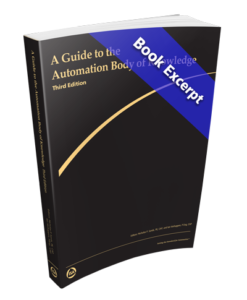AutoQuiz is edited by Joel Don, ISA's social media community manager.
This automation industry quiz question comes from the ISA Certified Automation Professional (CAP) certification program. ISA CAP certification provides a non-biased, third-party, objective assessment and confirmation of an automation professional's skills. The CAP exam is focused on direction, definition, design, development/application, deployment, documentation, and support of systems, software, and equipment used in control systems, manufacturing information systems, systems integration, and operational consulting. Click this link for more information about the CAP program.
In a motion control application, which of the following signal types would be able to indicate both direction and velocity?
a) 4–20 mA
b) 3–15 psi
c) ±10 V
d) 0–10 V
e) none of the above
In order to indicate both direction and velocity, a signal with both positive and negative characteristics is required. Motion controls use either ±10 V or ±5 V signals to accomplish this. Direction is indicated by the sign of the signal; magnitude of velocity is indicated by the magnitude of the voltage.
The other three choices are typical signal types for analog inputs, but none have the ability to easily indicate direction, only velocity. Obviously, a pneumatic (3–15 psi) signal would never be a good choice for motion control applications.
The correct answer is C, “±10 V.”
Reference: Nicholas Sands, P.E., CAP and Ian Verhappen, P.Eng., CAP., A Guide to the Automation Body of Knowledge. To read a brief Q&A with the authors, plus download a free 116-page excerpt from the book, click this link.
About the Editor
Joel Don is the community manager for ISA and is an independent content marketing, social media and public relations consultant. Prior to his work in marketing and PR, Joel served as an editor for regional newspapers and national magazines throughout the U.S. He earned a master's degree from the Medill School at Northwestern University with a focus on science, engineering and biomedical marketing communications, and a bachelor of science degree from UC San Diego.





